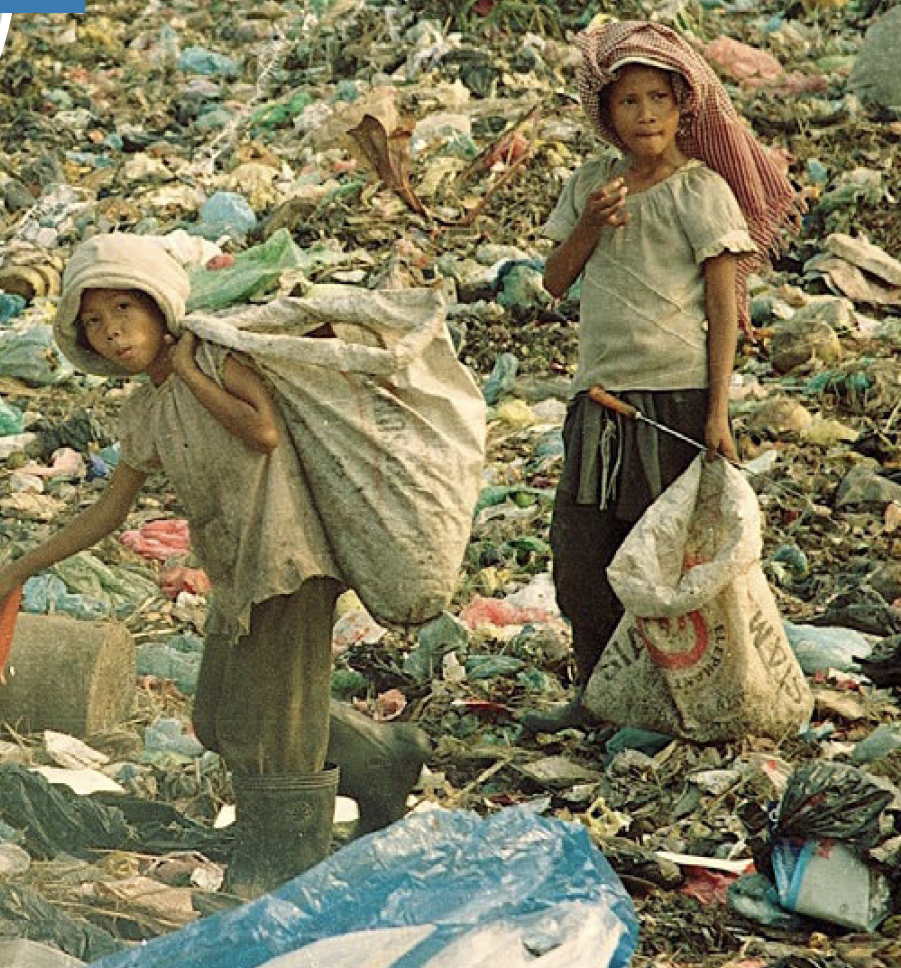Reasonable Cause Inc. has entered into a joint project agreement with Cambodian Children’s Fund (“CCF”) to support the Digital Literacy Program for primary school aged children at Prek Toil, a small village in Steung Meanchey, an area in Phnom Penh that suffers significant disadvantage. This school acts as a feeder school for the Neeson-Cripps Academy – a non-selective high school with a particular focus on STEM subjects. The Year 12 cohort from this school sees 86% of its graduates progress to university with full scholarships provided by CCF.

The Steung Meanchy district was previously host to one of the largest garbage dumps in Southeast Asia. It accepted waste from chemical companies, heavy industry and hospitals. It was an environmentally toxic and dangerous place. Impoverished children would scavenge on the garbage dump in order to survive.
CCF was founded in 2004 with a vision to lift the Steung Meanchy community out of poverty and to provide hope through education. CCF has a comprehensive set of programs including healthcare, housing, food, clean water and others in order to ensure better access to education. CCF offsets lost income from child labour.
CCF provides transportation to students and materials needed to succeed in school studies. Students spend half of each day attending public school classes and the other half of each day attending specialised CCF classes. Students who have fallen behind in schooling are placed in a program designed to support them and catch them up to their peers. CCF also provides a variety of additional learning opportunities, including a variety of after school STEM (Science, Technology, Engineering, Maths) focused clubs, extra cultural and artistic classes, physical education facilities, and more.

Cambodia remains the poorest ASEAN country1 with 12.9% of its population still living below the international poverty line in 2018, according to the Asian Development Bank2 . 45% of those living in poverty are 19 years or younger.
Economic struggle is the main driver behind the high child school dropout rates in Cambodia. In 2017 only 28% of Cambodia’s population has attained at least year 7 by the age of 15, while the remaining 72% of the 15-year-olds were either in years below 7 or had dropped out of school.4 Children are forced to leave schools either because their parents are unable to keep up with school expenses or in order to attain employment.5 The latter is evident in the relatively high child and youth labour, being 12.6%6 and 17.9%7 respectively.

This leaves children failing to meet learning standards appropriate for their age. Nearly 25% of children in year 3 cannot write at all while 27% of children aged 3 to 5 years are on track developmentally in literacy and numeracy. It is estimated that 55% of those will have dropped out of school by the age of 17 years.8
Reasonable Cause Inc. is proud to join with CCF in helping to overcome educational disadvantage by supporting the Digital Literacy Program at Prek Toil primary school.
2025 Digital Literacy Program Participant – Tola

Tola is nine years old. He lives in one of the poorest parts of Phnom Penh. He had not had the opportunity to interact with any form of information technology until he attended the Digital Literacy Program at Prek Toil Primary School. He has developed a fascination with digital art and drawing. He has aspirations to be a graphic designer. Tola is learning coding and design, as well as a range of other fundamental digital literacy skills.
2025 Digital Literacy Program Participant – Si Y

Si Y is a confident and bright young girl who is nine years of age. Her mother is a garment worker, and her father is a construction worker. There is no information technology in the family home. Si Y has been enrolled at the Digital Literacy Program at Prek Toil Primary School for a few months now. She is enjoying interacting with information technology and learning a range of important skills. Si Y is particularly keen to learn more about coding.
Footnotes:
- https://www.humanandhopeassociation.org/poverty/
- https://www.adb.org/countries/cambodia/poverty
- Programme for International Student Assessment for Development – National Report for Cambodia (a publication of the OECD) at pages 29 and 154.
- http://schooldropoutprevention.com/country-data-activities/cambodia/
- https://ilostat.ilo.org/topics/child-labour/
- https://ilostat.ilo.org/topics/youth/
- https://www.unicef.org/cambodia/education
